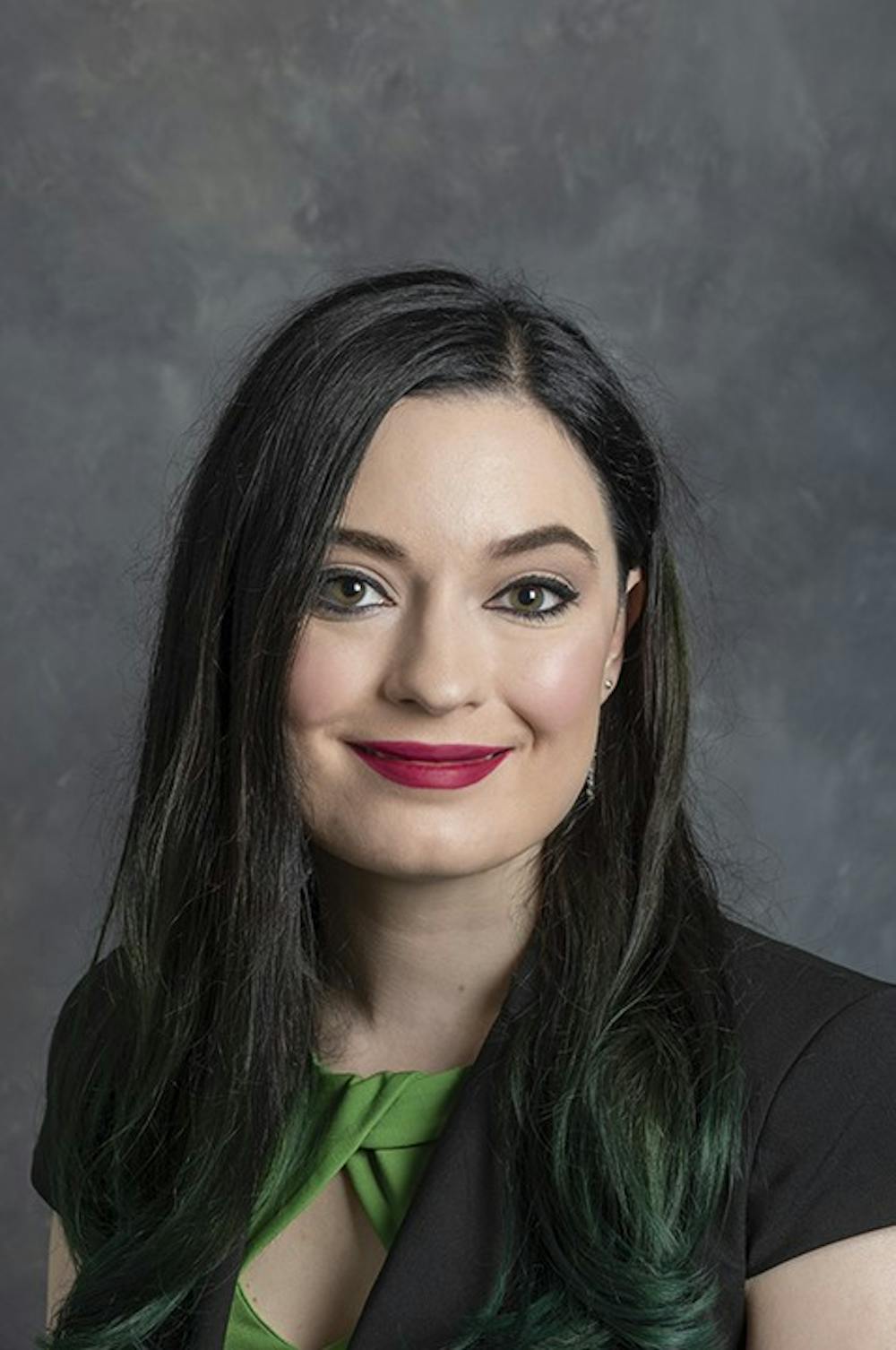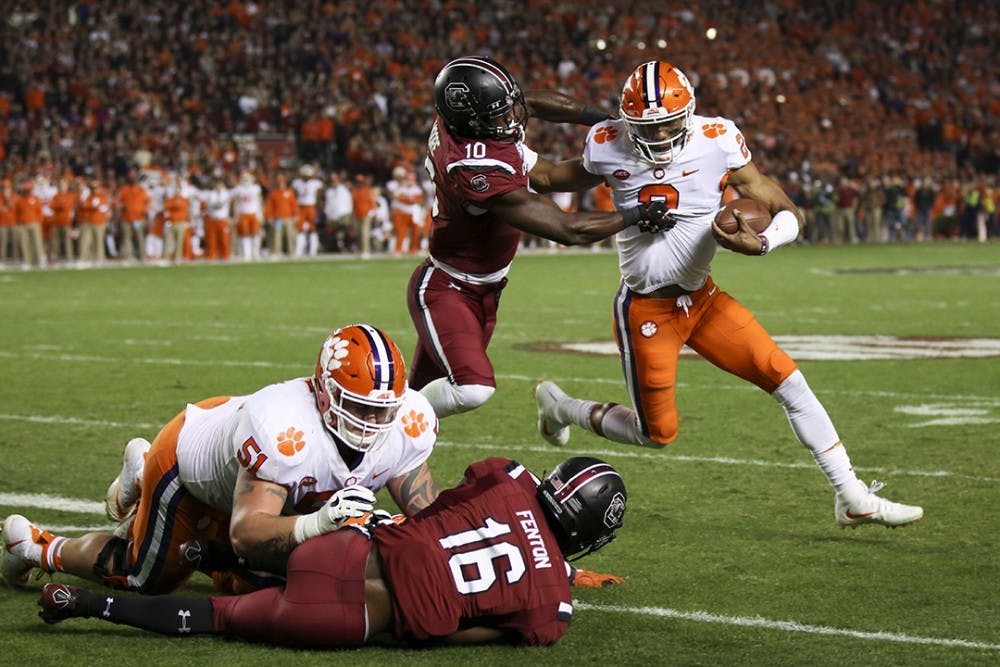From the Boston Red Sox vs. the New York Yankees to FC Barcelona vs. Real Madrid, the face-offs between these teams tend to come to mind as some of the biggest sports rivalries in history. However, right here at home in South Carolina, everyone knows that the biggest beef of all is between the South Carolina Gamecocks and the Clemson Tigers.
After Benjamin Tillman argued that the University of South Carolina wasn’t focused on practical skills and decided to create the agriculturally-focused Clemson College in 1889, tensions have run high in the Palmetto State.
Even if you aren't from South Carolina, you can't help but notice casual nods to the rivalry in grocery stores, local restaurants or even in regional car dealership commercials.
However, for many invested fans, this rivalry is much bigger than football. The booming chants, the dramatic video reels that play once games reach the fourth quarter and the sea of garnet and black at Williams-Brice Stadium can attest to this.
But why do emotions run so high? What exactly is the science behind a rivalry?
"It actually comes from the sociology of deviance, at least that's how I would view it, and it's that idea of having an ingroup and an outgroup," said Anna Rogers, a doctoral candidate in the department of sociology.

Rogers, a Bilinski Fellow for the 2018-2019 academic year and recent winner of the Graduate Student Teacher of the Year Award, has been a student at USC for nine years and is currently working on her Ph.D. with a focus on sexism and gender dynamics.
Having grown up 20 minutes from Clemson, Rogers is no stranger to the rivalry. Although her father is loyal fan UGA fan, her mother is a Clemson graduate and currently works in Clemson's educational department.
When she left for college, Rogers followed in her mother's footsteps, attending Clemson until she ultimately decided to transfer to USC. As a result, Rogers is rare in that she has experienced the rivalry from both sides. Like her own experience, she believes that many people's first connection with their favorite sports teams is through family.
"A lot of people who are sports fans, if you ask them, 'when did you first become a fan of the team or what are your earliest memories of being a fan of this team,' most people connect it back to a family member," Rogers said. "Someone kind of introduced them to that specific school, and then it kind of then you get those feelings of nostalgia and loyalty to your family and so then the team comes in and becomes kind of this part of the family tradition."
In other words, she said something like "the family sports team" is indoctrinated at birth. While taking a glance at the crowd at Willy B., one might notice that some of the spectators look younger than a year old, but are seemingly already devoted Gamecocks. Rogers noted that in simple acts such as expecting parents buying Gamecock onesies for their baby, the parents are inadvertently already molding their unborn baby's identity.
“You don't know the gender of the baby yet, you don't know anything about the baby, you just know the baby is gonna be here in nine months and our first thought is 'let's go grab that baby a little Gamecock onesie.' So already before the baby is here, the socialization has started, this baby is gonna be a Gamecock fan," Rogers said.
Rogers also said that even if out-of-state students grew up with a different team, once they decide to come to USC, a new chapter in their life has emerged and a new type of socialization has begun.
Although some might view rivalries in a bad light, Rogers asserts that despite their negative connotation, rivalries can be healthy to some extent. An example she used was the Carolina-Clemson Blood Drive.
“Obviously the blood drive has no actual connection to the football team, it's not sport-related, but it is something that happens that is very positive for society. So we're getting something that we need that's very valuable, blood, that we can use to help people," Rogers said. "So in that way we can kind of channel that group solidarity and that emotional thing for something that's very positive for society."
However, Rogers acknowledges that the unfortunate flip side to something like the blood drive are the brawls and shouting matches that sometimes happen at games.
“It's very tense and then all of a sudden you start to see brawls or ... very bad language, people calling each other names and that's kind of, it's that same root emotion which is so interesting that kind of has you go out and do this positive thing," Rogers said. "And then of course, I feel like there's always something to be said for when you introduce alcohol into an environment, right? That can make people get little bit more heightened with their emotions."
Another component of the brawls that Rogers noted was how people tend to determine a person's character by their associated sports teams. She says that the people who partake in brawls have often never met, but have already determined their thoughts on the other person through something as trivial as wearing garnet and black or orange and purple.
Although rivalries have the potential to get dangerous, Rogers believes that gathering to support a favorite sports team can be good fun if it's done the right way. Ultimately, she acknowledges that at their core, rivalries are human nature and aren't going away anytime soon.
"It will persist over time and continue to pro-exist because if you think about the students that we have in the student section cheering today, you know they are probably at some point going to have their own children and those might be little Gamecock fans, running around them in the Gamecock jerseys and Gamecock gear and it'll just be a cycle and continue," Rogers said.

